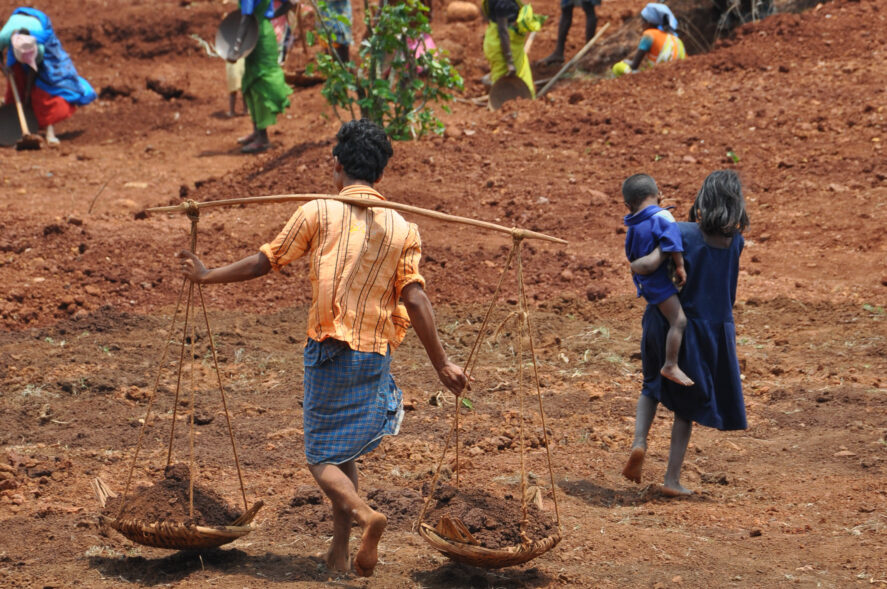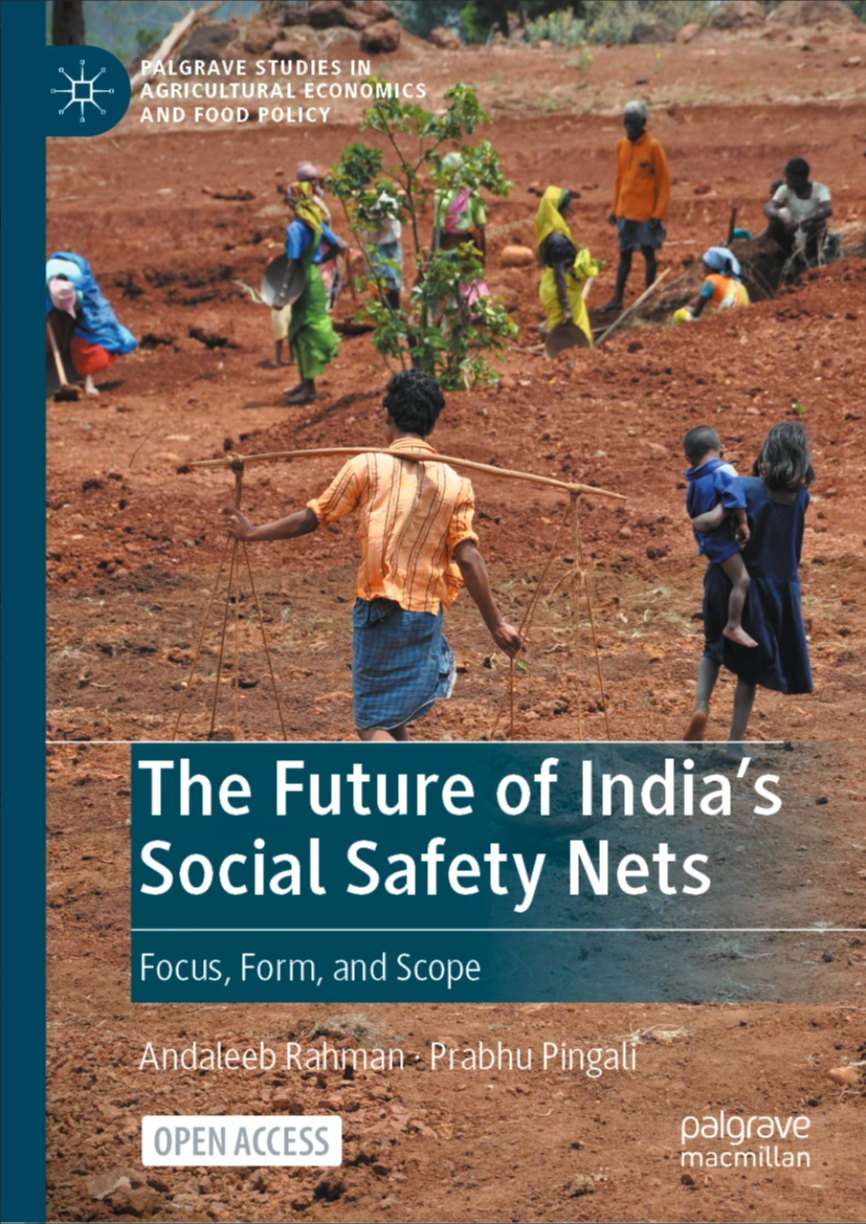New Book Charts a Novel Course for India’s Social Safety Nets

With a growing economy and increasing clout on the world stage, India is a success story among developing countries, but persistently high poverty and malnutrition rates threaten to leave millions of lives behind. A new book authored by researchers at the Tata-Cornell Institute for Agriculture and Nutrition (TCI) argues that India needs to rethink its social safety nets in order to address these issues and realize its full potential.
In The Future of India’s Social Safety Nets: Focus, Form, and Scope, Research Associate Andaleeb Rahman and Director Prabhu Pingali explore India’s array of social welfare programs and contend that the country should replace its piecemeal efforts with a systemic approach aimed at achieving a resilience that lifts families out of poverty and keeps others from falling into hardship.

“It’s not enough for social safety nets to help only those who fall underneath some arbitrary line dividing the poor from the not poor,” Rahman said. “India should build a social protection system that develops individual and household resilience so that people can hold their own in the wake of calamities that occur during their lifetimes, like job losses, crop failures, or health emergencies.”
The book provides an analysis of current social welfare programs, such as the Public Distribution System (PDS), exploring their origins, their successes and failures, and how they could be redesigned for the future. The authors touch on several hot-button issues in Indian politics, such as potentially replacing some programs with cash transfers and the question of whether programs like the PDS should be universal or targeted. They argue that politics cannot be ignored when re-imagining the social safety net.
“The resilience-enhancing ability of the social protection system requires a strong political coalition around progressive ideas, empowered citizens, a capable state, investments in public infrastructure, and sufficient fiscal capacity to fund programs,” Rahman said.
In their analysis, Rahman and Pingali focus on three aspects of welfare policy design: focus, or intended beneficiaries; form, or the manner through which assistance is provided; and scope, or the developmental objective of a policy. They argue that India would benefit from a progressively universal social protection system that balances the tradeoffs between fiscal prudence and minimizing targeting errors that leave deserving beneficiaries in the wind. They prize adaptability for the form of assistance provided, arguing that social programs must be attuned to the economic and demographic changes occurring throughout the country, especially as different regions experience different levels of economic development. For example, while direct assistance might be suitable for some socioeconomic and political contexts, cash transfers might be more advantageous under other conditions.
Rahman and Pingali note that many of India’s social welfare programs were developed to address rural poverty and hunger. While those are still areas of concern, India today also faces problems specific to urban livelihoods. Some issues, such as the lack of employer-based social security and climate change, threaten the poor and non-poor alike.
“The social safety net must change as India changes,” Pingali said. “By encouraging public deliberation, conducting small-scale experimentation, and adapting programs to different state contexts, India can provide resilient social protection to its people as it further develops.”
The Future of India’s Social Safety Nets was published by Palgrave Macmillan as part of the Palgrave Studies in Agricultural Economics and Food Policy book series. It is available for download through open access.
Feature image: Workers participate in an NREGA project in Chhattisgarh, India. (Photo by Raghav Puri)





